“Show me the incentive, I’ll show you the outcome” Charlie Munger.
Moving from the era of industrialisation to the era of globalisation and technology has led to significant changes in the nature of careers and employee development. Today, neither employees nor organisations recognise an implied lifelong employment contract.
Stability and job security have been replaced by shorter tenure and contract or cyclical work.
The view of employees as assets belongs to an employer-employee paradigm incompatible with the challenges in today’s business world.
“Your people are your greatest asset.”
Not anymore. People are instead investors in companies, just like shareholders.
Assets are owned and have no free will – they can be bought and sold by their owners. An office building cannot relocate to another city. Machinery doesn’t decide it would rather be in the factory next door. IP cannot transfer itself to a competitor tomorrow.
But people do – all the time.
Shareholders choose to invest their finite capital in businesses, to generate ROI – a yield (income), to achieve capital growth (which they may extract at a later late), or a combination of the two. When investors find a situation for a better return, they invest their capital elsewhere.
People do the same thing. They generate ROI by investing their finite time with companies, to generate a yield (income), and to achieve professional growth (accumulating knowledge and experience). Then they later convert that into either greater income with the same employer, or may choose to ‘divest’ it, transferring their accumulated value to an alternative employer who sees a greater ROI in them and offers a better return on their time investment.
Before any new investment decision is made, job seekers need to be sure it’s the right time for them to divest. For the majority of active job seekers this process is often forced upon them; they have found themselves on the wrong end of a bad investment and must move on.
High performers on the other hand, those with achiever pattern are the equivalent of high-net-worth individuals; they’re sophisticated, astute buyers, and also sceptical investors; especially those in leadership roles. See: “Is the juice worth the squeeze.”
They’re already in a good situation and qualify as ‘passive’ job seekers, potential investors – they keep a watching brief for better time investments where they can create more value – for themselves and their employer. High performers only commit to interviewing if the incentive is right, they thrive on accomplishments and look for professional growth opportunities – they need compelling reasons to make the leap of faith required to change jobs.
The job description (prospectus) is the only way to connect the dots for most job seekers; when job descriptions focus on what is required: the minutia – lists of routine tasks, duties, and responsibilities the investor is already aware of instead of the situational context – what the role offers: the scope, scale, and impact of potential accomplishments of the role, high performers are not incentivised to apply.
TalentCentric work with leadership to identify, engage, and retain “Talent Investors”.

